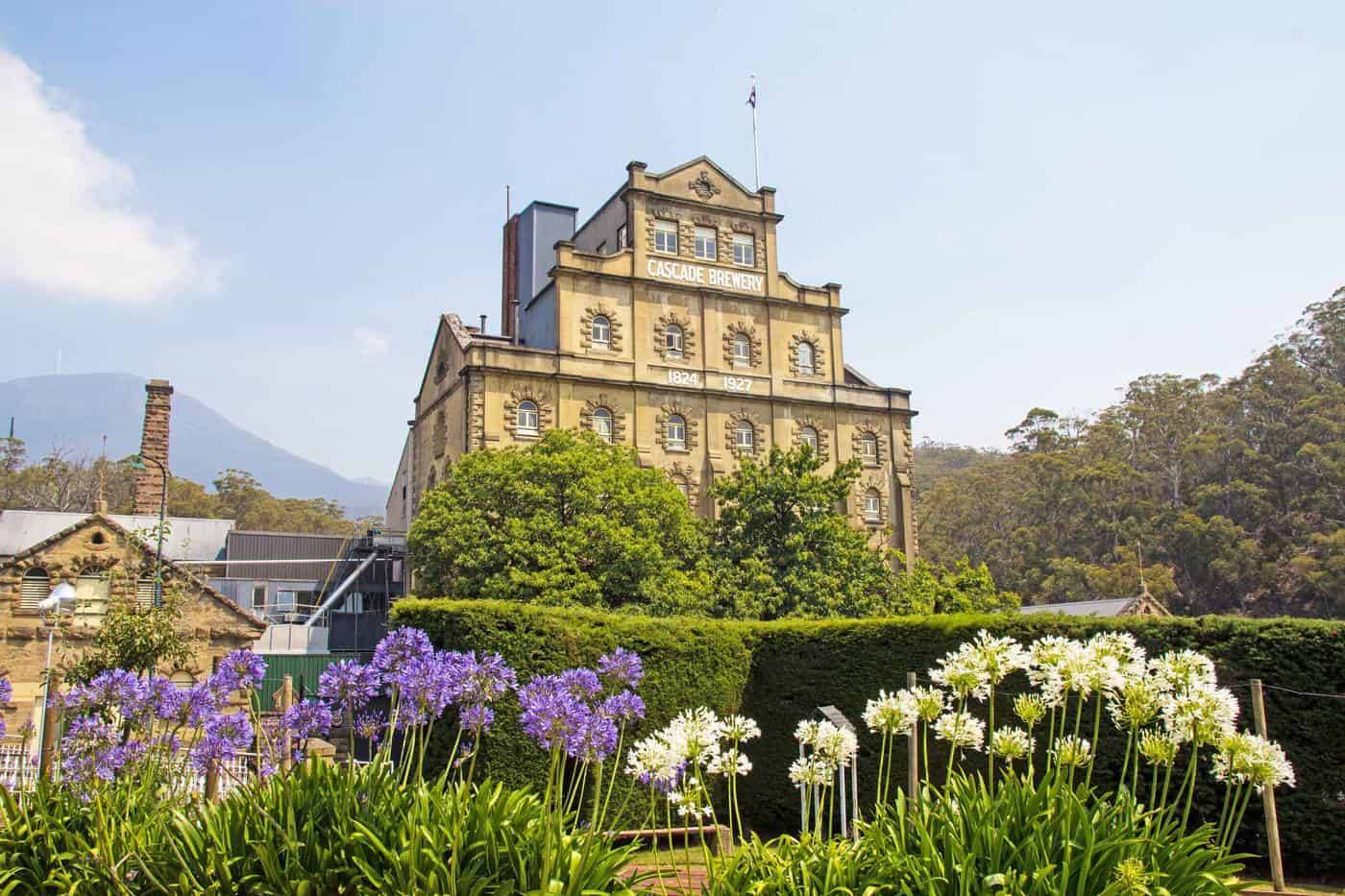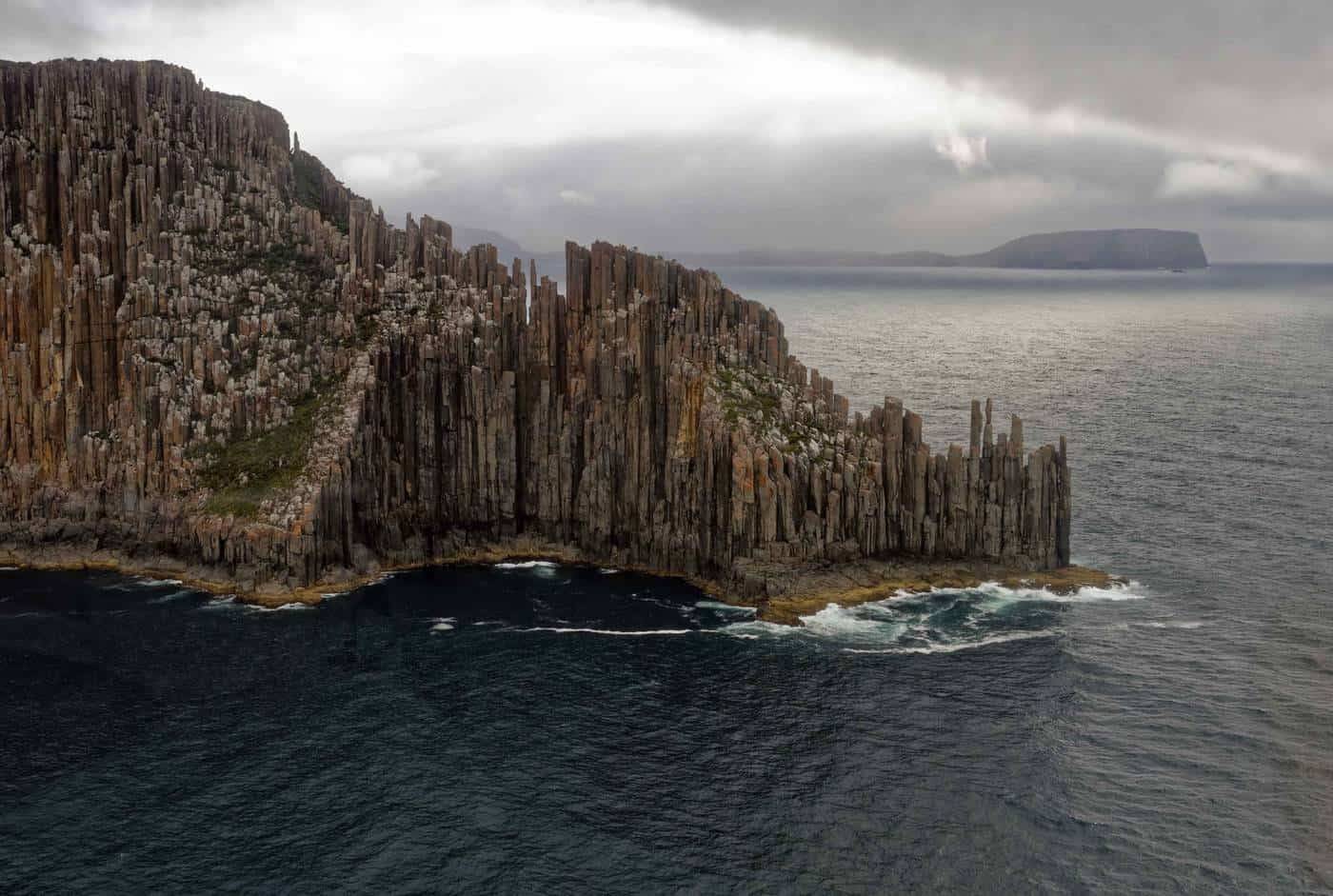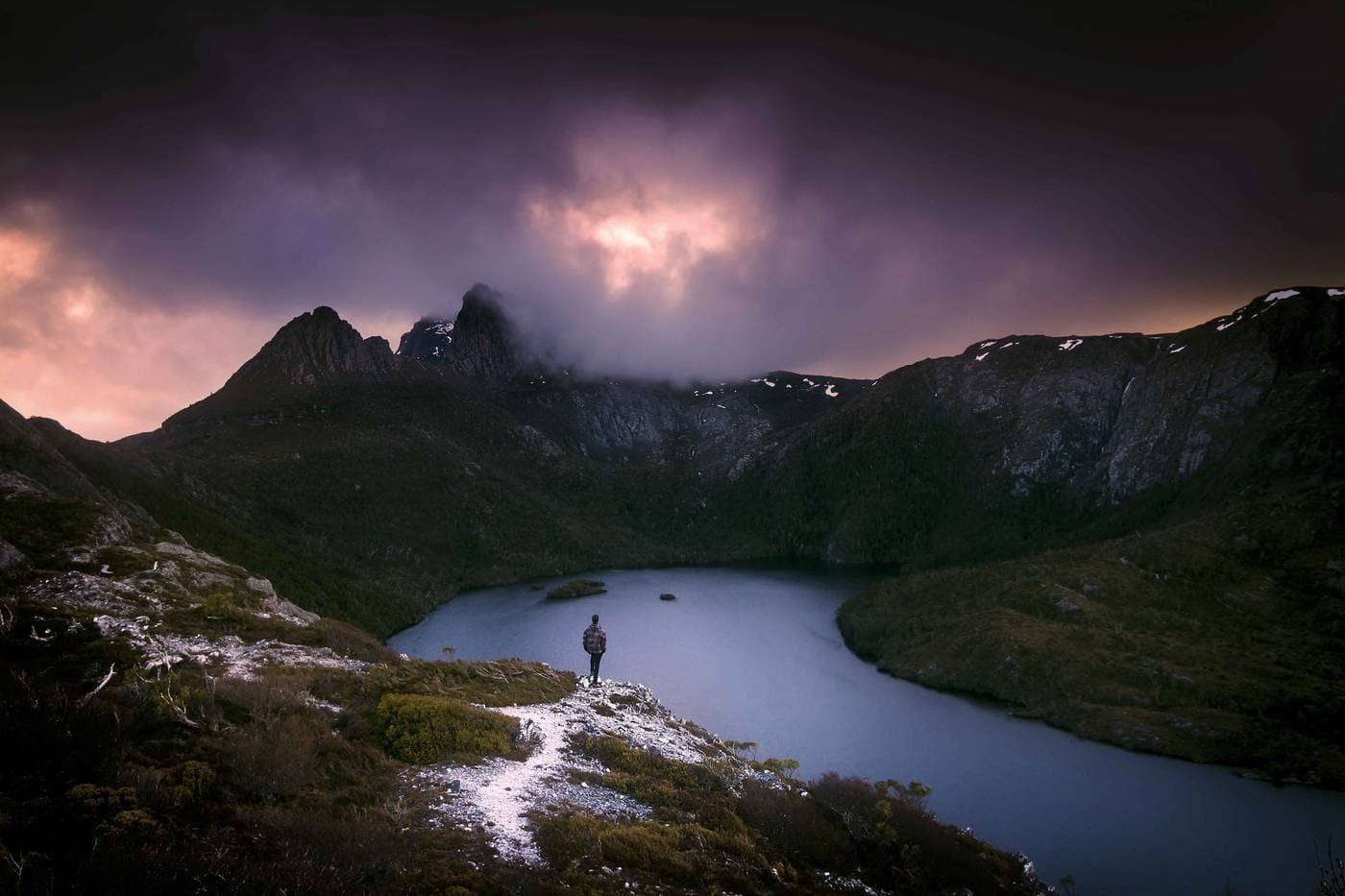
THE RAW BEAUTY OF NORTH WEST TASMANIA
THE SCENIC NORTH (DEVONPORT-BURNIE REGION)
Once you reach the north-west coast, you will never want to leave. The dramatic landscapes cover unique natural treasures, boundless adventures, and the island`s most hidden culinary secrets.
Strong winds amplify the wild character of the Devonport-Burnie region and rocky Mount Roland, the Great Western Tiers and Black Bluff stand comparison with green farmland and the finest rural scenery.

Lake Barrington, south of Devonport, is a popular destination for all water sport and nature lovers and those who seek for the thrill they should visit the wood-chopping carnival ‘Tasmaniana,’ where the world`s best big-boned, broad-shouldered axemen gather up and make the iron-hard eucalypt fall apart like butter under their axe.
The historic towns of Stanley and Smithton are defined by dairy farms, and commercial forests and this area was once known as a pastoral empire. The famous Nut Hill at Stanley can be ascended by walk or a chairlift, and, for magnificent views, it is the major tourist attraction.

DAVENPORT-BURNIE SCENIC DRIVE
Whoever travelled the northern part of Tasmania would agree that the Devonport-Burnie Scenic Drive is the highlight. Stretching along 200 km of the coastline, the journey starts at the Narawntapu National Park with abundant wildlife.
You can complete the route in 4 days, stopping by at the main points of interest, such as Rubicon Estuary, Port Sorell, Founder`s Lake, Penguin and the Gunns Plains Cave. Penguins, fur seals, platypuses, wombats, kangaroos and Tasmanian devils are the stars of the national park.

TRAVEL TIP
Devonport-Burnie region is also home to bioluminescent plankton, and if lucky you might get a chance to encounter the spectacular light show in the Preservation Bay. The glowing plankton causes a unique phenomenon often called “sparkling sea” or “sea of stars,” that is only seen at night, and it truly is a wonder of nature.
ESSENTIAL EXPERIENCES IN THE SCENIC NORTH
- Scenic Drive Devonport-Burnie – admire the rugged coastline of northern Tasmania and its natural wonders (remember to stay overnight in the Preservation Bay to look for the glowing plankton)
- Stanley – The Nut Circuit Track (1 hr loop track around the plateau, and if you climb the peak add 1-hour return)
- Lake Barrington – Wood-chopping Festival is the major attraction of the region, and it should not be skipped

WEST COAST
Most of all, it is an intangible – the spirit of the West – that most strongly appeals to the visitors. Here is a land which, for all its access to the modern world, has kept the effete niceties of life at arm`s length. It undoubtedly has a strength which lingers in one`s senses.
This hardly accessible mining region of Tasmania features old settlements which are now virtual ghost towns, while others like Queenstown, Rosebery, Waratah, Zeehan and Savage River are still waiting for further mineral discoveries.
Visitors will surely want to explore the Copper Mines of Tasmania, Lake Margaret Power Station, Views of the Valley, Iron Blow Lookout, the historic Gormanston and the ghost town of Linda.
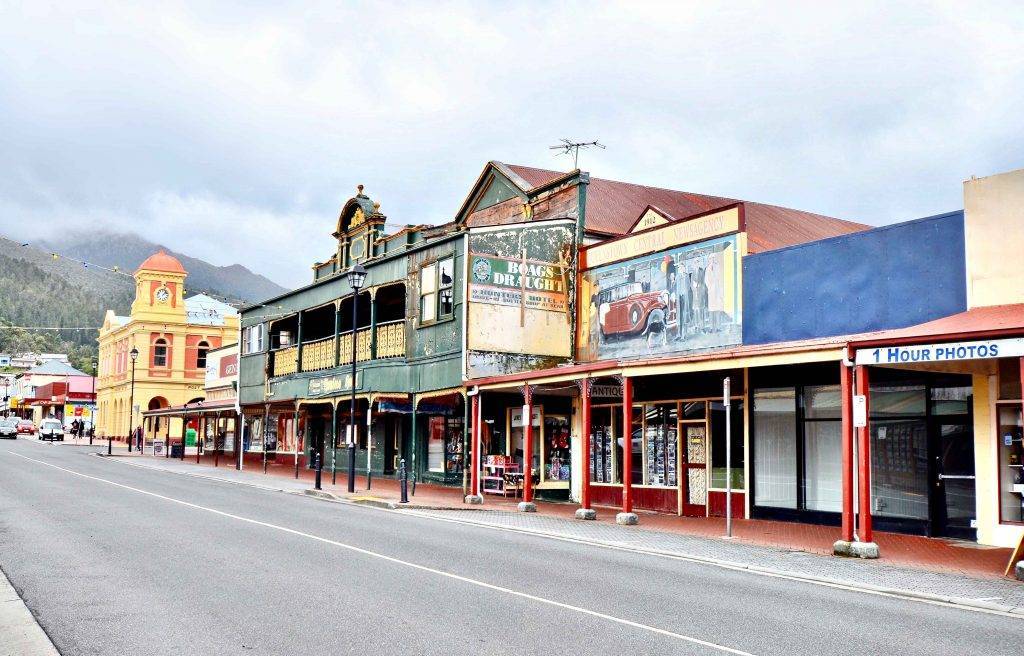
In the very north of the West Coast, the region dubbed as `The Edge of the World` dominates the country. The West Point State Reserve and Arthur River offer journeys along the wild and unspoilt coastline; here the open ocean extends 40 000 km all the way to Argentina, and one can certainly feel the isolation.

The remoteness of this territory naturally makes it be a paradise for fauna and flora and a very attractive tourist destination. For instance, the Arthur Pieman Conservation Area, Savage River National Park or Meredith Range Regional Reserve teeming with wildlife.
The magnificent coastline with rivers, lakes, caves, giant dunes and historic sites are magnets for adventure seekers and nature lovers.

Corinna is a lovely and well-visited spot, mainly for the Tarkine Wilderness Area and its pretty walks through lush vegetation; Huon Pine Walk, Savage River Walk, Whyte River and Mount Donaldson are the favourites. Walking or kayaking is the best way to explore the native flora and local birdlife.
Pieman River cruise departs from the port of Strahan where visitors can get both by self-driving and the famous West Coast Wilderness Railway from Queenstown.
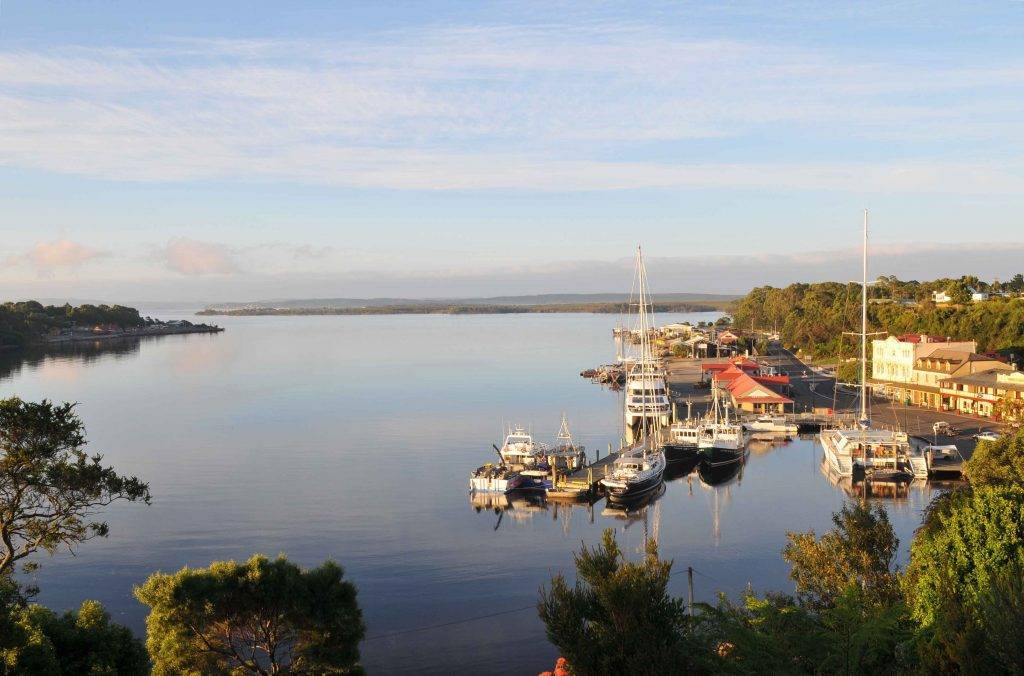
ESSENTIAL EXPERIENCES IN THE WEST COAST OF TASMANIA
- Arthur River – hire a canoe and drift down the river to see the mesmerising rainforest reflections and encounter the absolute silence and serenity, solely interrupted by the sound of sea eagles soaring overhead (look for the river platypuses)
- Queenstown – take a historic walk across the mines, power stations and discover the area ghost towns and hear their spooky stories
- Copper Mines of Tasmania, Lake Margaret Power Station, Views of the Valley, Iron Blow Lookout and Gormanston – a good day trip from Queenstown
- West Coast Wilderness Railway – do not miss out on the historic train from Queenstown to Strahan!
- Corinna – track or kayak through the rainforest of Tarkine Wilderness Area to uncover its hidden secrets. A tranquil stroll through the Huon Pine Walk and its swinging bridges is a must-do here.
- Strahan – take the Pieman River Cruise from the port of Strahan that will take you through the untouched surrounds of the Pieman River State Reserve

CRADLE MOUNTAIN-LAKE ST CLARE NATIONAL PARK
The legendary Cradle Mountain stands brooding over the northern end of the Cradle Mountain-Lake St Clair National Park which itself is part of the enormous wilderness that forms Tasmania`s World Heritage Area. It is a craggy peak created by glaciers and forming a stunning backdrop to the lovely Dove Lake, Lake Wilks and Crater Lake below it.
There are fantastic walking and hiking opportunities in the Cradle Mountains, ranging from easy strolls through the rainforest and short lake loops to challenging summit climbs.
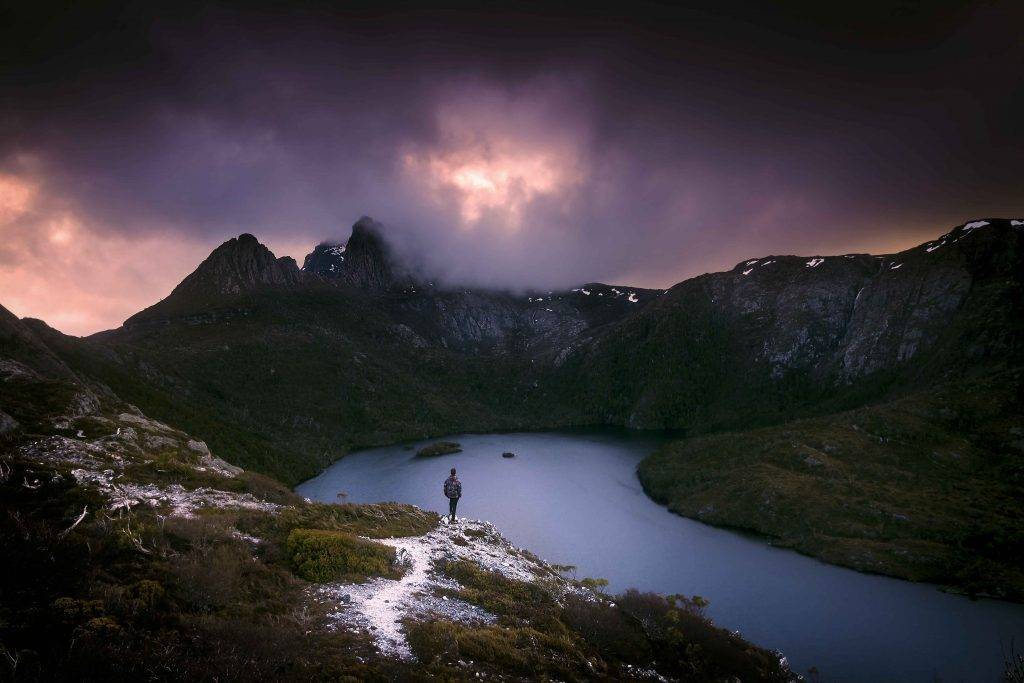
BEST WALKING TRACKS IN THE CRADLE MOUNTAIN-LAKE ST CLARE NATIONAL PARK
- Dove Lake Circuit (2-hour loop track, medium grade)
- Marion`s Lookout Walk (3 hours one way, medium grade)
- Crater Lake/Crater Falls – (3 hours one way, medium grade)
- Shadow Lake Circuit Walk (4-5 hour loop track, medium grade)
- Speeler Track (easy 1,5-hour loop walk)
- The Waterfalls Walk (easy 30 min walk)
- Enchanted Walk (easy 30 min walk)
- King Billy Track (easy 40 min walk)

THE OVERLAND TRACK
The most popular Overland Track runs from Cradle Mountain to Lake St Clair – Australia`s deepest freshwater lake. The 80 km long trail takes 5-6 days to complete, and there are nine basic huts placed along the way available to stay. The route takes the hikers through some of the most astonishing landscapes in Australia, including wildflower fields, ancient pine forests, alpine streams and waterfalls and crystal-clear lakes. The highlights are Cradle Mountain summit, Mount Ossa, Barn Bluff and Dove Lake.
NOTE The Overland Track can be done all year round. However, the best time to visit is summer (November-April)
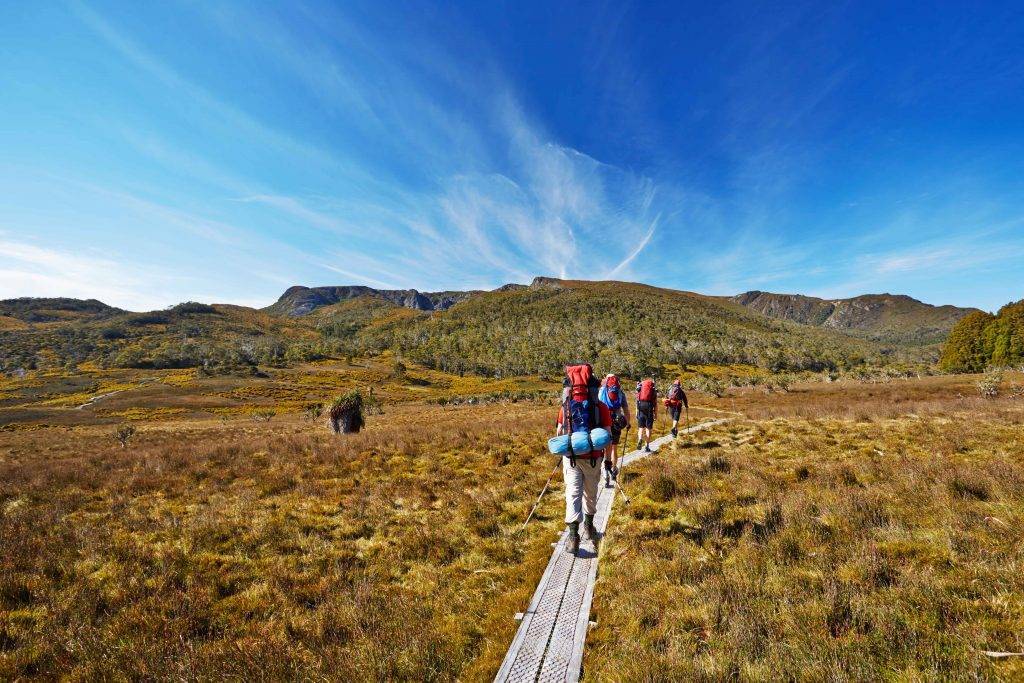
GREATER CRADLE MOUNTAIN-LAKE ST CLARE NATIONAL PARK
In the south-east, Derwent Bridge is the gateway to the national park. It is a small river-crossing town in moorland country, situated between two lakes – Lake St Clair and Lake King William.
The north-western side of the park is extremely popular with holidaymakers, especially for the stunning Lake Rosebery and Lake Mackintosh and surrounding mountain scenery. Both lakes and their lakeside town of Tullah are lovely relaxing locations ideal for summer vacations. Camping, fishing, bushwalking and water sports are the major activities in the region. Get active and climb Mount Farrell and the highest waterfalls in Tasmania – Montezuma Falls.

East of the Cradle Mountain-Lake St Clair NP there is a beautiful territory of wilderness – the Central Plateau. Including the Walls of Jerusalem National Park, this is an elevated and exposed region where dominant features of the landscape are woodlands and forests of native pencil pine. Heavily glaciated during the Ice Age, the plateau is dotted by thousands of ice-carved lakes and tarns stocked with trout.

ESSENTIAL EXPERIENCES IN THE CRADLE MOUNTAIN-LAKE ST CLARE NATIONAL PARK
- Cradle Canyons – get some adrenaline while abseiling or climbing some of the most exciting canyons of Australia (Lost World Canyon – beginners or Dove Canyon & Machinery Creek – advanced)
- Walls of Jerusalem National Park – camp by one of the fabulous lakes in reserve and do some bushwalking. The Walls is the most popular full-day track (access from the Mersey Forest Road)
- Lake Rosebery & Lake Mackintosh – spend a few days by one of these wonderful lakes and climb the summit of Mount Farrell (3 hrs return) to be rewarded with amazing views and walk to the Montezuma Falls (3 hrs return)
- Overland Track (80 km long iconic trail of Tasmania, 5-6 days, extensive trail)

WHEN TO TRAVEL
The best time to visit Tasmania is summer when the temperatures tend to be more pleasant (Dec-Feb). However, this is a very busy time due to school holidays and peak season, and accommodation often gets fully booked.
Did you enjoy the North West Tasmania? Why don’t you explore the North East Tasmania?
NOTE
Some parts of western Tasmania (mountains) get snow in the wintertime, so if travelling between June-September always check for weather conditions at the local visitor’s centre.
HOW TO GET THERE
Fly to Hobart/Launceston (directly or via Melbourne)
For all international flights check out www.momondo.com or www.skyscanner.com
TRAVEL TIP
Hire a vehicle (4WD recommended) and self-drive. The most popular way to travel around Tasmania is to rent a campervan (that saves you money for accommodation and allows more flexibility). There are wonderful campgrounds and holiday parks with good facilities all over the island.

